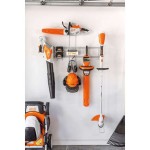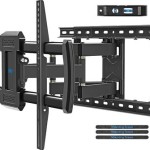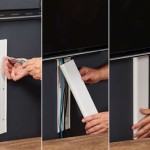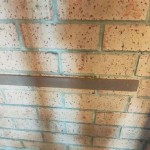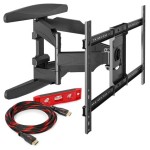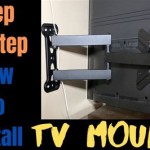How To Remove a Wall Mount From the Wall
Wall mounts are versatile fixtures that serve various purposes, from holding TVs to displaying artwork. However, there may be times when you need to remove a wall mount from the wall. This could be due to a change in decor, a relocation, or simply because the mount is no longer needed. This guide will provide you with a step-by-step approach to safely and effectively remove a wall mount from the wall, regardless of the type of mount or the surface it is attached to.
1. Identifying the Type of Wall Mount
The first step in removing a wall mount is to identify the type of mount you are dealing with. Different wall mounts use different attachment methods, and understanding the type of mount will help you determine the appropriate removal process. Common types of wall mounts include:
- Standard Wall Mounts: These are typically used for TVs and are attached to the wall using screws or anchors. They are usually fairly straightforward to remove.
- Articulating Wall Mounts: These mounts offer flexibility, allowing you to adjust the TV’s angle. They often have a more complex design involving multiple joints and may require additional steps during removal.
- Tilting Wall Mounts: These mounts provide limited tilt adjustment but are generally simpler than articulating mounts. They are also attached using screws and anchors.
Once you have identified the type of wall mount, you can proceed with the removal process.
2. Gathering the Necessary Tools
Having the right tools will make the removal process much smoother and safer. Here is a list of common tools you may need:
- Screwdriver: A Phillips head screwdriver is typically needed for most wall mounts. You may also need a flathead screwdriver for some mounts or for removing protective covers.
- Wrench: Depending on the type of wall mount, you may need a wrench to loosen screws or nuts. You may need both a standard and metric wrench.
- Pliers: Pliers can be helpful for holding screws or nuts while loosening them, especially if they are stubborn.
- Hammer: You may need a hammer to remove anchors or other fasteners from the wall. However, use caution to avoid damaging the wall.
- Level: This is optional but can be helpful to ensure you are removing the mount straight.
It is essential to ensure that the tools you use are in good condition. If you are unsure about the type of tool you need, it is best to consult the manufacturer's instructions or seek assistance from a professional.
3. Removing the Wall Mount
The specific steps for removing a wall mount will vary depending on the type of mount and its design. However, the general process involves the following:
- Disconnect the mount from the device: Before attempting to remove the mount from the wall, disconnect it from the device it is holding. For example, if you are removing a TV mount, unplug the TV and disconnect any cables or wires. This will prevent damage to the device and make it easier to maneuver the mount.
- Remove the screws or fasteners: Locate the screws that attach the mount to the wall. Use the appropriate screwdriver to loosen them and remove them completely. Be careful not to overtighten or strip the screws. If the screws are difficult to remove, try using a wrench or pliers to provide extra leverage.
- Remove the anchors: Most wall mounts use anchors to secure themselves to the wall, especially for heavier objects. You may need to use a hammer to tap the anchors out of the wall. Be cautious to avoid damaging the wall surface. Sometimes, anchors are designed to be pulled out by hand. If this is the case, use a pair of pliers or a screwdriver to grip the anchor and pull it out gently.
- Remove the mount from the wall: Once the screws and anchors are removed, gently detach the wall mount from the wall. If it is stuck, try wiggling it gently to loosen it up. Be careful not to damage the wall surface. If you are unsure about the procedure, consult the manufacturer's instructions.
- Inspect for damage: After removing the mount, carefully inspect the wall surface for any damage. If there are any holes or imperfections, you may need to patch them before painting or decorating the wall.
Always prioritize safety during the removal process. If you are unsure about any step, do not hesitate to seek professional assistance.
4. Dealing with Stubborn Screws or Anchors
Sometimes, screws or anchors can become stuck or difficult to remove. If you encounter this situation, follow these tips:
- Apply penetrating oil: Spray penetrating oil on the screw or anchor and allow it to sit for a few minutes. This will help loosen it up and make it easier to remove.
- Use a larger screwdriver: A larger screwdriver can provide more torque, making it easier to loosen stubborn screws. Be sure to choose a screwdriver that fits the screw head snugly.
- Use a wrench or pliers: A wrench or pliers can provide extra leverage when loosening stubborn screws or nuts.
- Tap the screw or anchor: Gently tap the screw or anchor with a hammer to loosen it. Be careful not to damage the wall surface.
If none of these methods work, it is best to consult a professional who can safely remove the stubborn screw or anchor.
Removing a wall mount from the wall can be a simple task if you follow the right steps and take necessary precautions. Remember to identify the type of mount, gather the appropriate tools, and follow the removal process carefully. If you encounter any difficulties, do not hesitate to seek assistance from a professional.

How To Remove A Tv Mount Youtube

How To Remove Tv From Wall Mount Youtube

How To Remove A Tv From Wall Mount The Plug Hellotech

How To Uninstall A Tv Youtube

How To Remove Sharp S Tv From Wall Mount

How To Remove A Tv From Wall Mount Angi

How To Remove A Tv From Wall Mount The Plug Hellotech

X Ray Vision How To Remove A Tv From Wall Mount Uninstall Flat Screen Off Youtube

Uninstall Your Tv And Fix The Wall Like A Pro

How To Remove Tv Wall Mount From Lg S


